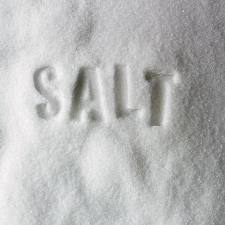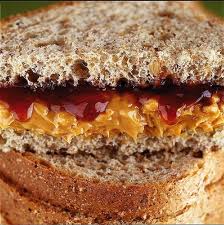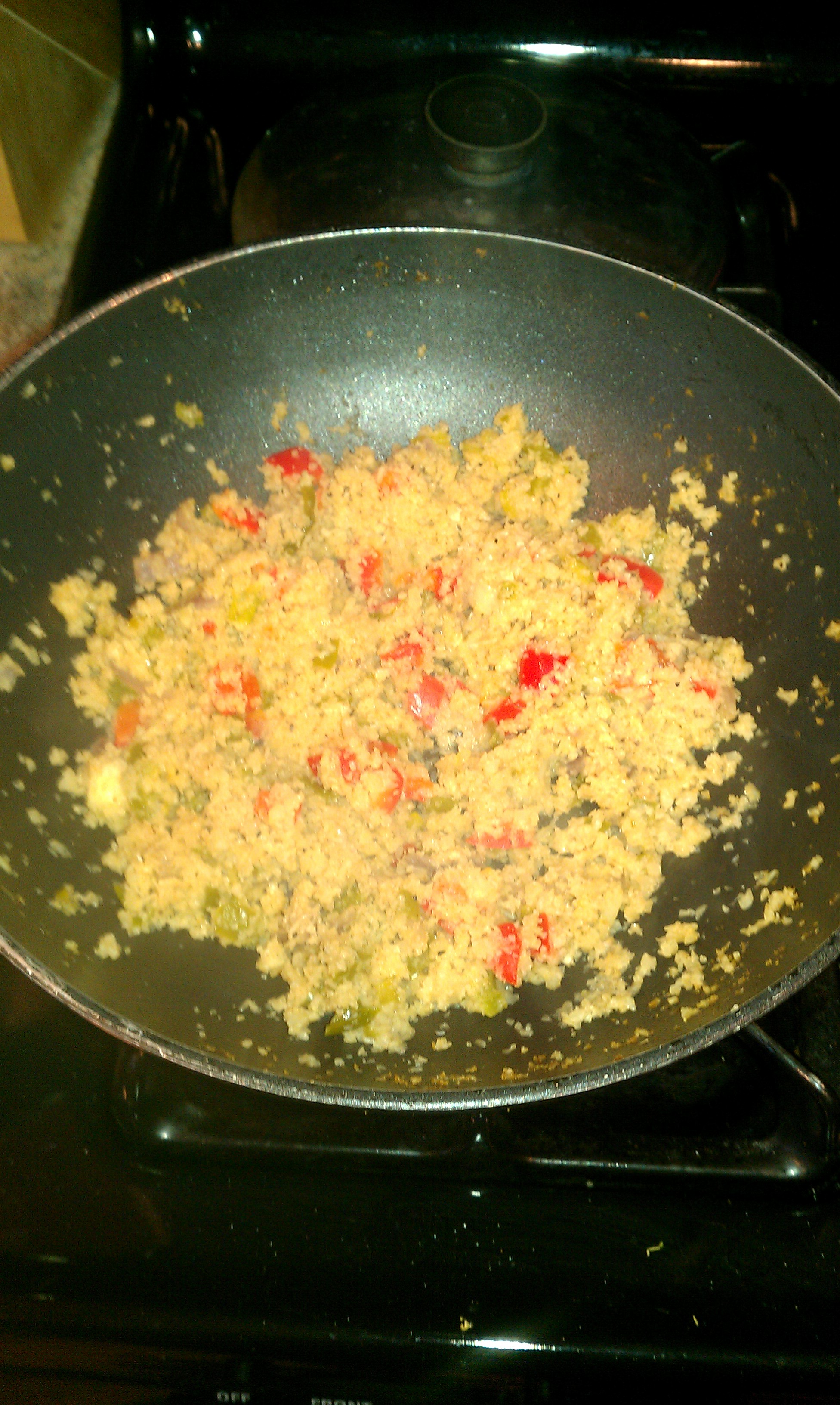Reducing Dietary Salt
 I've never been one to worry much about my salt intake, but for this pregnancy I made the decision to really crack down on the added sodium in my diet.
Why? Well, two reasons:
I've never been one to worry much about my salt intake, but for this pregnancy I made the decision to really crack down on the added sodium in my diet.
Why? Well, two reasons:
1. When pregnant with my daughter, I found that often my blood pressure was very low (this is usual for me). But, about 35% of the time it would inexplicably sky-rocket to a borderline high area. I don't know whether it was stress, anxiety, diet, or weight gain that caused this problem.
2. I also had a tough time with swollen feet/ankles by the last trimester of pregnancy 1, so I'll pretty much do anything to avoid that again.
Something to check out and consider: This morning Fooducate posted a blog called 9 Ways to Reduce Your Salt Intake.
I'm only just now reaching my third trimester of this pregnancy, so I don't know if my approach will be effective for the swelling. But, I do know that my blood pressure readings have been quite a bit more consistent and reasonable up to this point.
Coaching Nutrition and Exercise For the Win: Keep it Simple, Stupid
Last weekend, my wife and I were able to take advantage of a great opportunity. In short, some good friends of mine recently had their "Harajuku Moment" (or personal tipping point) with regards to personal health. They requested that Kelsey and I provide them with some nutrition lessons and give their current dietary regimen a "makeover," if you will. Given that they have a beautiful lakehouse - and offered to lodge us there for the weekend on top of providing all the food - we replied, "When do we start?!"
Needless to say, the experience was very rewarding. Throughout the weekend, we prepped+cooked meals with them, along with putting together a “mini packet” comprised of easy recipes, quick & dirty checklists to run through every time they prepare a meal, a sample grocery list, and a brief chart of healthy fats, proteins, carbs, and supplements. We were also able to answer some questions and debunk some myths for them:
Should I avoid eating close to bedtime? What should I eat before/after a workout? How much red meat should I consume/avoid consuming? Should I avoid egg yolks like the bubonic plague?
 Kelsey and I were able to provide this family with some very practical strategies they could begin applying to their lives immediately. Strategies that would allow them to experience greater mental clarity and energy levels, lower blood sugar, reduce the risk of heart disease, and all-in-all fix a lot of “stuff” going on in their bodies. And these strategies were all very uncomplicated.
Kelsey and I were able to provide this family with some very practical strategies they could begin applying to their lives immediately. Strategies that would allow them to experience greater mental clarity and energy levels, lower blood sugar, reduce the risk of heart disease, and all-in-all fix a lot of “stuff” going on in their bodies. And these strategies were all very uncomplicated.
We didn’t tell them to count calories. We didn’t tell them to weigh their food. We didn’t tell them they had to buy everything “organic” (whatever that means anymore). We didn't them them if they failed to eat Paleo then their world would be over immediately.
This entire process got me thinking….many of us – whether we are the teacher or the student - tend to overcomplicate topics in the exercise and nutrition realm. Given that I’m a strength & conditioning coach, I often fall on the teaching side of things, so I’ll briefly touch on this subject from that perspective.
When I first started in this industry as a personal trainer, I made things way, way, WAY too complicated. Whether it was coaching someone through a squat or something as simple as a X-Band Walk, I practically gave the poor client a short essay on how to perform the exercise.
 The same thing with regards to nutrition advice. I gave them wayyy too much information. All this ended up doing was overloading the person and didn’t actually help them get on their feet toward reaching their goals.
The same thing with regards to nutrition advice. I gave them wayyy too much information. All this ended up doing was overloading the person and didn’t actually help them get on their feet toward reaching their goals.
My heart was in the right place, but my head was not.
For those of you reading who teach exercise (be it in a professional setting or simply to a friend or family member), please learn from my mistakes. Don’t overwhelm the person who is listening to you. Give them one cue and explain why they should care.
When you teach someone a squat for the first time, they don’t care if you know that the rectus femoris is the only quadricep that crosses both the hip and knee joints, or that you understand the biceps femoris is the only hamstring that externally rotates the femur along with extending the hip.
Please.....let's get over ourselves.
Practical Application
Let’s put this into a practical scenario, shall we? Pretend that your teaching someone to squat for the first time. I’ll provide the “fail” version, along with a strategy you could take that will lesson the odds of your student completely hating you and being overwhelmed.
Female Volleyball Player. First Session.
Fail: "Okay, next, we’re going to squat. First, we’re going to hold the weight at our chest, or “goblet position” because if you don’t, your body will likely shut down and move like a pregnant seal, creating aberrant movement as a result of a perceived threat due to lack of stability…although you might still suck due to poor ankle dorsiflexion, inhibited glutes via reciprocal inhibition of the hip flexors, and/or tight lats. You’re then going to turn your feet out, point the big toe up, but keep your weight distributed evenly on your feet, then sit BACK, don’t fall forward!, keep those shoulder blades down and back into your back pockets, pull yourself down via your hip flexors, CHEST TALL! don’t slouch now, act like your sitting on an egg so you don’t slam into the box, then EXPLODE up so you can access your fast twitch motor units and improve your rate of force development."
Win: "Okay, first, we’re going to squat. This is going to help improve your vertical jump and allow you to move faster on the court. Watch how I do it, and then do your best to replicate it." *Coach then demonstrates a few reps of the goblet squat to box*
See the difference?
In the second scenario, we gave the athlete a reason to care, and then coached them by showing them. Ninety nine times out of a hundred, the athlete/client will perform the movement better in the second scenario rather than the first.
Is it still going to be perfect? No. But you can tweak and help them throughout the subsequent sets, adding just one or two coaching cues and keeping it there for that day. Throughout the following weeks, you help them with one small improvement at a time. Rome wasn't built in a day, ya know?
Now, I realize there are exceptions. Some people are more “audible learners” as opposed to visual learners, and others actually do want a lot of detail (usually those are people who already have some lifting experience and are involved in the field in some form or another). But I hope you get the point.
The same thing can apply to fat loss clients, someone dealing with knee pain, or those seeking some extra help in the kitchen.
Keep it simple FTW.
When You Can’t Sleep
So, you’re not sleeping? Ahh – neither am I.
Here’s a list of things to keep your busy mind occupied and focused on something positive instead of dwelling on the issues that are probably keeping you up in the first place:
- Eat a peanut butter and jelly sandwich. Why not? Who cares that it’s 2AM? They’re delicious and will probably make you feel a little bit better about being awake.

- Take the bull by the horns: address whatever is keeping you from falling back to sleep. Returning emails, addressing little projects, addressing little parts of big projects, etc. Can’t hurt, right?
- Listen to music.
- Turn on SportsCenter. It’s sports, it’s on 24-hours a day, it’s usually pretty positive and inspiring.
- Do something enjoyable/out of the ordinary.
Here’s my early morning play-by-play after Arabella woke up at 1:17AM (you start remembering the exact time after about the 300th occasion you’ve been roused by crying in the dead of night):
- Lay awake in bed for approximately 60-minutes mulling over small, but important and irritating, “issues.” Eventually, I officially acknowledged I’m not going back to sleep.
- Go downstairs and make a peanut butter and jelly sandwich (see #1 above). It was delicious.
- Return a few emails.
- Fill out SAPT product survey: I filled out a review on one of SAPT’s excellent products (if you’re reading between the lines, yes, that means I buy them, too… at full price). They actually are excellent and I actually enjoyed pouring some positivity out in a way, which for me is very non-traditional.
- Rediscover my love for Britney Spears. I'm totally serious right now.
- Make adjustments to my program for women’s basketball (Mason).
- Realize I can do a blog post on not sleeping – begin that.
- Fill out testing roster for women’s soccer (Mason) and go over testing protocol and setup one more time to ensure things go smoothly in the morning.
- Finalize this blog post while watching highlights of Pro Bowl players on SportsCenter.
Seriously though, here are some Actual Recommendations for Improving Sleep Patterns:
- Exercise daily: this helps reduce stress and expend the extra energy that may be stored up.

- Eat sensibly: throughout the day and before going to bed. It’s best to steer clear of large, dense meals right before trying to sleep.
- Set yourself up for some relaxing wind-down time: take a shower, drink some water, and get into bed with a good book (again, something relaxing).
- Allot 7-9 hours for uninterrupted sleep.
- Avoid allowing young, fitful sleepers occupancy near your bedroom. I’m hoping to surmount this problem in about 5 years.
Good LUCK!
For Your Reading Enjoyment
Unfortunately I'm quite short on time today, so I'm going to pass on a couple reads I think you'll enjoy. Both two-part series come from Brian St. Pierre, who keeps a fantastic website that primarily centers around nutrition. I check his site a couple times a month, and there were a few I found over the past four weeks or so that really hit home.
1. Why Pointing the Finger at Carbs is Missing the Point: Part 1 and Part 2
Here Brian does a fantastic job directing people away from idiocy and brings us back to seeing things with a clear lens. As Alwyn Cosgrove once exclaimed: "Regardless of pesticides, fructose levels, etc., people who eat the most fruits and vegetables are healthier than those who eat the least. You're going to have a hard time convincing me that the current obesity epidemic is a result of people eating too many apples!"
2. Tips for Time Management: Part 1 and Part 2
Given that I deleted my Facebook account in college to help me manage my time better, on top of the fact that my wife and I don't even pay for basic cable due to TV being an utter time-vacuum, I felt this short series really hit the nail on the head and offered some very practical+effective tools to improve one's sense of well-being.
That will do it for today. Be back soon!
Pomegranate Juice Reduces Muscle Soreness?
The Journal of Strength and Conditioning Research published a paper entitled "The effect of pomegranate juice supplementation on strength and soreness after eccentric exercise" in July of 2011. Here is the abstract:
The purpose of this study was to determine if pomegranate juice supplementation improved the recovery of skeletal muscle strength after eccentric exercise in subjects who routinely performed resistance training. Resistance trained men (n = 17) were randomized into a crossover design with either pomegranate juice or placebo. To produce delayed onset muscle soreness, the subjects performed 3 sets of 20 unilateral eccentric elbow flexion and 6 sets of 10 unilateral eccentric knee extension exercises. Maximal isometric elbow flexion and knee extension strength and muscle soreness measurements were made at baseline and 2, 24, 48, 72, 96, and 168 hours postexercise. Elbow flexion strength was significantly higher during the 2- to 168-hour period postexercise with pomegranate juice compared with that of placebo (main treatment effect; p = 0.031). Elbow flexor muscle soreness was also significantly reduced with pomegranate juice compared with that of placebo (main treatment effect; p = 0.006) and at 48 and 72 hours postexercise (p = 0.003 and p = 0.038, respectively). Isometric strength and muscle soreness in the knee extensors were not significantly different with pomegranate juice compared with those using placebo. Supplementation with pomegranate juice attenuates weakness and reduces soreness of the elbow flexor but not of knee extensor muscles. These results indicate a mild, acute ergogenic effect of pomegranate juice in the elbow flexor muscles of resistance trained individuals after eccentric exercise.
Sometimes... okay, lots of times... I find strength and conditioning research to be quite limiting and, in the end, not that helpful. It's been well accepted and practiced for years that the best post-training meal to consume is a liquid meal with roughly a 3:1 or 4:1 ratio of carbs:protein.
Pomegranate juice really has nothing more substantial in it (for exercise recovery) than any other fruit juice or a sports drink. It's ALL sugar.
Take this study for what it's worth: further proof that something is better that nothing after you train. I'm sure the study participants would have been better served and demonstrated recovery in the "knee extensor muscles" if they'd been given a pomegranate drink that also included the proper ratio of carbs:protein.
Here's a SUPER simple recipe for a recovery drink I make for myself:
3-4 tbsp Nestle Quick powder
1/2 scoop protein powder
Water
Dunzo.
FREE TRAINING & delicious Cauli Couscous!
In case you hadn't heard, right now you can experience our distance coaching system for 2-weeks absolutely FREE!!! That’s right, we’re opening-up the vault so you can try a taste of SAPT goodness for yourself:
- 2-weeks (6-sessions) of carefully balanced and scientifically backed programming. This program is designed to mobilize, strengthen, and condition a moderately active adult!
- Step-by-step, in depth coaching cues to ensure you’re performing the movements correctly!
- Training videos presented in HD and accessible via most mobile devices!
To receive your 2-weeks of free programming and access to our online database of exercise videos click HERE. Fill in the relevant fields and indicate “I’d like to try the 2-week free Distance Coaching Trial,” and a SAPT rep will be in touch with you shortly to provide you your program!
Cauli Couscous Recipe; taken from Jen Comas-Keck from elitefts.com:
Ingredients: Head of cauliflower 2 - 4 cloves of garlic 1 TBSP olive oil Green onions Purple Onion Red pepper Green pepper Couple Tablespoons of low sodium organic stock - veggie, chicken or beef will work
Seasonings: Dash of sea salt Dash of pepper Dash of cumin Dash of chili pepper I threw in some shredded carrots and jalepenos, too because I'm a fan of the muy caliente.
First, cut the cauli florets off. Then shove'um in the food processer, a couple quick pulses will do...you don't want to end-up with cauli-mash...
Next, heat up the tablespoon of olive oil and toss in your garlic and onions and get those warmed and carmelizing. Next, add the other veggie accoutrment to soften them up.
Lastly, add your cauli, along with the stock and seasoning (season to preference). Let simmer, flip your steaks, cut-up your avocado, a little red wine never did anybody no harm, and alotta made most pretty happy. All aboard the flavor train.
Enjoy,
Chef Boyaromo








